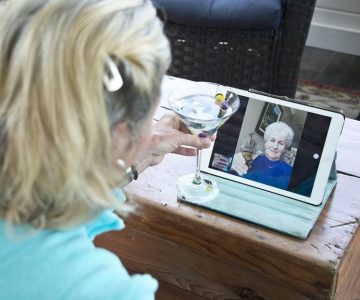Safe at Home
Instead of rushing them to hospital, community paramedics are helping patients stay in their own home.
Thinking back, Joan McDonald was aware the living arrangement she shared with her husband, David, occasionally put the couple in a vulnerable position. Both in their 70s, they loved their relatively isolated rural property in Mono, but for a few months during the winter of 2020, the ice buildup in the courtyard outside their door made them virtual prisoners.
Joan was in line for hip replacement surgery and used a cane to get around, while David’s medical conditions meant he was somewhat unsteady on his feet. Friends and family were keeping an eye on them, and they were grateful for home grocery delivery.
One blustery morning in February, Joan, a registered nurse and elder-care consultant, phoned David’s doctor with a question about a new symptom. The doctor needed bloodwork to make an effective diagnosis and offered to fax the requisition to the lab in Orangeville.
But with neither Joan nor David able to navigate the ice field surrounding them, they couldn’t get to their car. Then Joan remembered a chance conversation with a friend about a community paramedicine program offered by the Dufferin County Paramedic Service. She found a phone number online, made the call and, later that day, a sympathetic and knowledgeable paramedic was on their doorstep.The paramedic took David’s vitals, drew blood and, after consulting by phone with David’s doctor, administered an electrocardiogram. He faxed the ECG results to the doctor and dropped the blood samples at the lab in Orangeville for analysis. Early the next day, with up-to-the-minute information in hand, the doctor was able to advise the couple, by phone, on the next steps of David’s treatments. Since then, community paramedics have continued to provide David with a helping hand.

Dufferin community paramedics Josselyn Hudasek, Krystle Neumann and Cara Burleigh. Photo by Rosemary Hasner / Black Dog Creative Arts.
For Joan and David, Dufferin’s community paramedicine program is a welcome innovation. The program is a model of community-based care in which paramedics use their training and expertise in non-emergencies, such as that experienced by the McDonalds. There are no flashing lights or blaring sirens as the county’s specially trained paramedics go about their daily business, a departure from their common image as first responders only.
“The goal is to keep Dufferin residents healthy in the comfort of their own home,” says Gary Staples, deputy chief of the Dufferin County Paramedic Service. “Patients we connect with overwhelmingly want to avoid going to hospital. We see it as our job to advocate for them.”
Staples is justifiably proud of the leadership role played by Dufferin’s paramedic service in getting the community paramedicine model off the ground. In 2014, the Ontario Ministry of Health earmarked $6 million a year to support 30 community paramedicine demonstration projects across the province. Though Dufferin didn’t make the province’s list of pilot projects, Tom Reid, the county’s chief of paramedic services, immediately understood the benefits of filling in care gaps to enable people to stay at home rather than go into hospital.
Reid and his team also recognized that Dufferin’s service was perfectly positioned to introduce the community paramedicine model. The service operates as a partnership between the county and Headwaters Health Care Centre, a somewhat unusual collaboration in Ontario where most emergency medical services report exclusively to the municipality. The service’s existing synergy with the hospital meant many of the processes vital to community paramedicine were already in place.
“Our partnerships are based on mutual respect and shared views regarding the roles we play in the community. And we co-ordinate our equipment and medical practices in order to increase our efficiency. For example, supplies and equipment in our ambulances and in the hospital are the same, making for ease of transition when paramedics arrive with a patient,” says Staples.
So under Reid’s direction, the spark was lit, and Dufferin helped pioneer the program that has been so successful it is now being rolled out across the province.
Still, in the absence of official provincial funding, it was challenging at first to get the local program up and running. The Central West Local Health Integration Network, the LHIN responsible for managing and co-ordinating health care in Dufferin, initially provided funding for three months, then year by year.
As the program developed and its value became more evident, the Ministry of Long-Term Care committed last March to providing three years’ funding to existing community paramedicine programs. The more stable funding ensured Dufferin would continue for at least the next three years with three community paramedics available seven days a week. “That’s a great step forward for us and will directly benefit the clients we serve,” says Staples.
Community paramedic programs work in collaboration with other health care professionals and agencies, connecting patients with relevant services, and offering support for high-risk and vulnerable individuals. Services are provided throughout Dufferin, and in Caledon through Peel Region’s community paramedic program, as well as in Erin through Guelph-Wellington Community Paramedicine, though the services offered may vary.
The programs work hand in hand with Community Paramedicine Remote Patient Monitoring, or CPRPM. This Ontario-wide monitoring program uses remote technology to help people with chronic conditions effectively manage their own care in the comfort of their home. These patients have typically been diagnosed with congestive heart failure, chronic obstructive pulmonary disease, diabetes or other life-threatening or chronic illnesses.
Depending on the condition, paramedics set up self-management devices in the home and train the patient how to use them. Devices may include a weigh scale, blood pressure monitor, pulse oximeter or a glucometer – along with a pod connecting the device to community paramedics, who monitor the biometric data flowing from the patient’s home.
If the data exceed set thresholds, an alert is generated and paramedics will contact the patient to review their current health status, care plans and updates. Through a partnership with Future Health Services, a not-for-profit agency that provides telehome monitoring services to chronically ill residents of southern Ontario, qualified patients can enroll in the program at no cost. In Dufferin about 50 patients are currently monitored at home.
Enabling people to stay in their own home is not only a benefit to the patient, it generates enormous savings to the health care system. In 2018, the Sustainable Execution Research Collaborative published the results of a six-month study of the effectiveness of the CPRPM program in up to 14 Ontario municipalities. Analyzing the cost of monitoring patients at home compared with in the hospital, the study found that CPRPM patients’ 911 calls dropped by 26 per cent, as did their emergency department visits, and their hospital admissions declined by 32 per cent. These reductions amounted to a staggering 542 per cent return on the province’s investment in CPRPM.
“Even though our services aren’t needed on a day-to-day basis, our patients know we’re available if needed,” says Cara Burleigh, a paramedic with Dufferin for the past 23 years. Burleigh has participated enthusiastically in the evolution of her profession. In addition to responding to 911 emergency calls, she also visits patients through referrals and requests from primary care physicians, performing initial wellness checks and assessing current needs.
“Sometimes we schedule weekly wellness checks to keep an eye on vitals, or recommend personal service worker support, or perhaps occupational therapy,” she says. “We help with flu vaccinations for elderly people who are concerned about leaving home through the pandemic. We fill in the gaps and provide another set of eyes, while trying to do everything we can to assist Dufferin residents.”
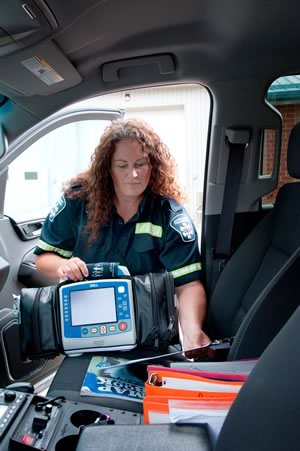
Cara Burleigh prepares for a regular check-up with one of the in-home patients she monitors. Photo by Rosemary Hasner / Black Dog Creative Arts.
The most consistent feedback Burleigh and her team receive is that both patients and their families take comfort in knowing someone is looking out for them.
It takes two years at a community college to qualify as a primary care paramedic. A further one-year course is available for those interested in becoming an advanced care paramedic – and community paramedics undergo still more training.
“The most important thing about our community care programs is how quickly we are able to evolve and go with what’s currently needed in the community,” says Staples.
Paramedic help in creating autonomy for palliative care patients is an obvious example. In their role as first responders, paramedics are able to quickly support those nearing end of life by delivering pain medications for agitation, breathing difficulties and anxiety while nursing staff or a palliative care physician are making arrangements to get to the patient’s home.
Family physicians, too, are becoming aware of the expanded services now offered by paramedics. Burleigh, for example, was contacted by a local doctor concerned about a patient who was unable to come to his office and adamant she didn’t want to go to the hospital. The woman had a complicated health history, including congestive heart failure.
At the patient’s home, Burleigh conducted a thorough assessment, patching in by phone with the doctor, who prescribed oxygen. Because paramedic vans are equipped with oxygen, Burleigh was able to administer the treatment. The patient’s vitals improved rapidly, and the doctor ordered continuing home oxygen for her.
Bloodwork was done, medications were altered, and by the time Burleigh was ready to leave the home, the oxygen company was on the doorstep with the required equipment for continuing home care. A year later the woman is still living at home and doing very well with weekly visits from the paramedic team.
In response to the current Covid pandemic, Dufferin’s community paramedics have also been working with Wellington-Dufferin-Guelph Public Health, Dufferin Area Family Health Team, Home and Community Care Support Services and Headwaters Health Care Centre to support patients who require in-home vaccinations. So far, about 175 patients have taken advantage of the service.
According to Staples, the vaccination initiative presented its own set of challenges. “It took some time to get approval for the Moderna vaccine to be moved in a single dose. Once this was accomplished we were able to start the home-bound vaccinations.
“The Moderna vaccine came in an 11-dose vial, so we were required to draw up all 11 doses at one time, and then they had to be administered within six hours. We are also required to wait with the patient for 15 minutes after the vaccine has been administered. The Dufferin geography makes it challenging to get around to all the houses and administer the vaccine within the required time frame,” he says.
Since then the home vaccination process has been somewhat more streamlined, but Staples notes it has taken “some creative scheduling and support from our community partners to get this done.”
In 2020, Dufferin County paramedics responded to more than 9,500 emergency calls. But whether as first responders dealing with emergency calls or as community paramedics offering a compassionate helping hand, they are integral to the health of the community, providing wraparound services for the most vulnerable. It’s a long way from the days when they were known simply as “ambulance drivers.”
Related Stories

It Takes a Virtual Village
Mar 31, 2021 | | CommunityIn what could have been a lost year for isolated new parents and their babies, social agencies moved their tried-and-true community meetups and support groups online.

Covid-19 Has Changed Us
Mar 31, 2021 | | Over the Next HillAnd some of those changes may be for the better.
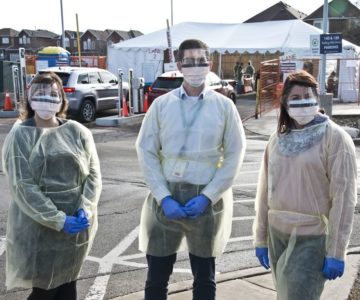
Call of Duty: Headwaters Health Care Centre
Nov 24, 2020 | | Local HeroesManager Lena Bruce, physician Charlie Joyce and nurse Darlene Fitzpatrick kept Headwaters Health Care Centre’s Covid-19 assessment centre going during the pandemic.
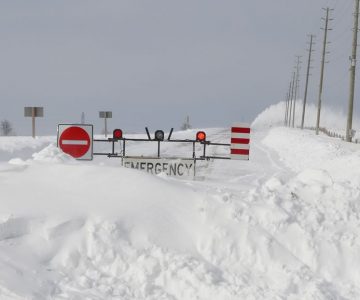
Ready or Not, Winter Storms Are on the Way
Nov 22, 2019 | | EnvironmentHowling blizzards, ice storms, power outages. Emergency services are on high alert, but when disaster strikes, the first line of defence is you.
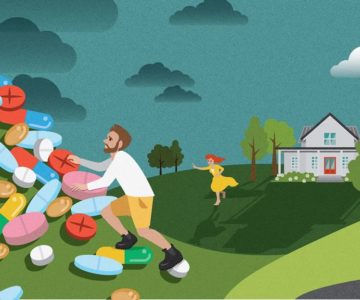
How the Opioid Crisis Has Hit Headwaters
Sep 16, 2017 | | CommunityIt’s not just a big city problem. Here’s how local communities are trying to stem the flow of pain pills.





